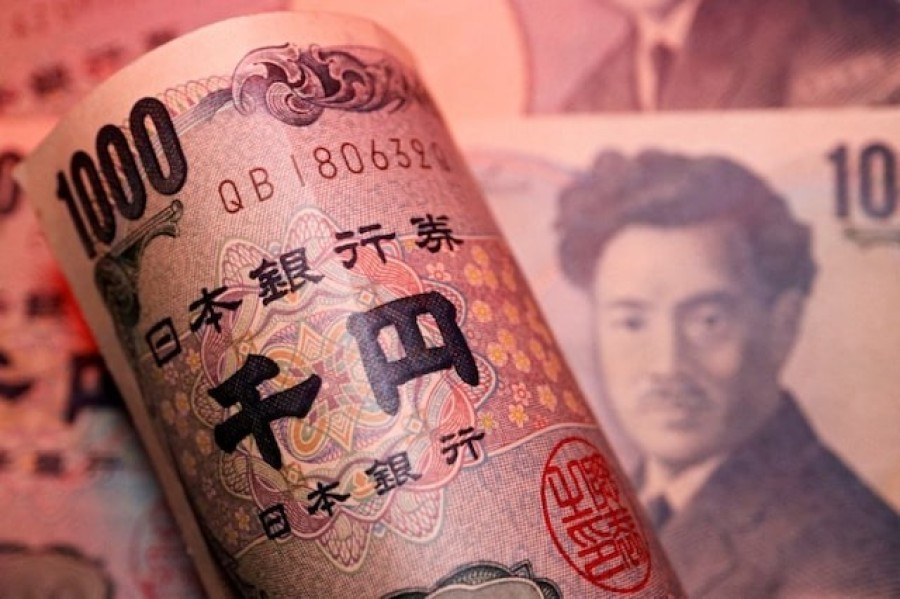Yen Slips, Markets Brace for Us Inflation Data

The yen extended its slow decline against the dollar in trading thinned by a Japanese holiday on Monday, with market participants still ambivalent about the odds of a deep Fed rate cut next month.
The respite follows a tumultuous week that began with a massive selloff across currencies and stock markets, driven by worries over the U.S. economy and the Bank of Japan's hawkishness.
Last week ended calmer, with Thursday's stronger-than-expected U.S. jobs data leading markets to pare bets for Federal Reserve interest rate cuts this year.
Still, investors remain unconvinced the Fed can afford to go slow with rate cuts, and their pricing of 100 basis points of easing by year end, as per the CME Group's FedWatch tool, corresponds to a recession scenario.
That leaves markets highly vulnerable to data and events, notably U.S. producer and consumer prices numbers due on Tuesday and Wednesday respectively this week, the global central bankers' meeting at Jackson Hole next week and even earnings from artificial intelligence darling Nvidia later in the month.
"It's more a case of market squaring up a little bit ahead of the U.S. inflation data," said Christopher Wong, currency strategist at OCBC Bank in Singapore. Mizuho analysts said investors should
The dollar was trading at 147.15 yen, up 0.4%. The euro stood at $1.0920 and the dollar index was flat at 103.18.
A week ago, the euro rose as far as $1.1009 for the first time since Jan. 2.
The Aussie was barely up at $0.6584 on Monday, while the New Zealand dollar stayed below last week's three-week high of $0.6035. It was last at $0.6015.
The Reserve Bank of New Zealand reviews policy on Wednesday and is expected to keep its key cash rate unchanged at 5.50%.
CARRY UNWIND
Wall Street ended higher last week, with E-mini S&P 500 futures closing nearly unchanged on the week after a precipitous 4.75% decline last Monday, while longer-dated Treasury yields declined.
Markets, in particular Japan's, were rocked last week by an unwinding of the hugely popular yen carry trade, which involves borrowing yen at a low cost to invest in other currencies and assets offering higher yields.
The violent selloff in the dollar-yen pair between July 3 and Aug. 5, sparked by Japan's intervention, a Bank of Japan rate rise and then an unwinding of yen-funded carry trades, caused it to fall 20 yen.
Leveraged funds' position on the Japanese yen shrank to the smallest net short stance since February 2023 in the latest week, U.S. Commodity Futures Trading Commission and LSEG data released on Friday showed.
The yen reached its strongest level since Jan. 2 at 141.675 per dollar last Monday. It is still down 4% versus the dollar so far this year.
J.P. Morgan analysts revised their forecast for the yen to 144 per dollar by the second quarter of next year, and said that implied the yen would consolidate in the coming months and they see reason to be optimistic on the dollar's medium-term prospects.
"Carry trades have erased year-to-date gains; we estimate 65-75% of positioning being unwound," they said in a note on Saturday.
Implied volatility on the yen, measured in yen options, has also subsided. Overnight volatility had spiked to as high as 31% on Aug. 6 but is now down to around 5%.
